Feeling the heat
This winter, the widely reported Australian bushfire crisis revealed how seemingly controllable events can quickly spread into a global emergency. Something in times like these we are becoming all too familiar with.
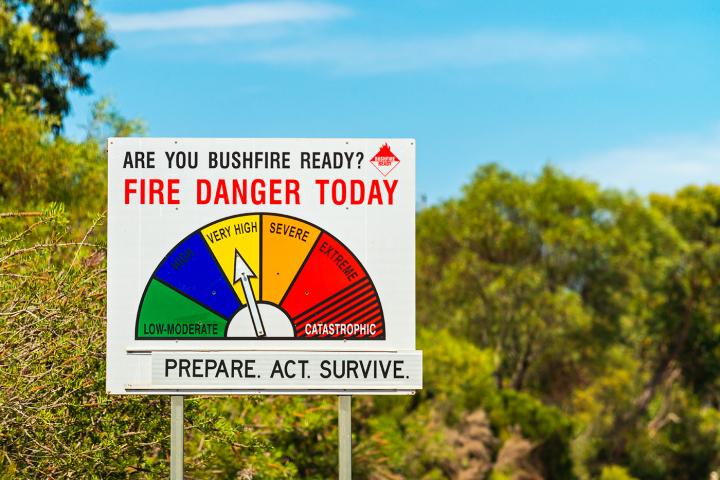
For Nikki Kay, Head of Marketing Recruitment and Communications in the School of Geosciences, the annual bushfire season was a familiar part of growing up in Australia. However, on a recent visit home she saw how another phenomenon, flooding, helped tackle the problem, bringing a mixture of relief and more challenges for her homeland.
By Nikki Kay
After living in Scotland for three years, I’ve noticed something fascinating happens when expat Australians are introduced to each other. After the usual pleasantries are exchanged, the conversation takes on a distinctly ‘Australian twist’.
While the rain patters gently down onto the cobblestone streets of Edinburgh, we wrap up warm and share stories of our homeland. Inevitably, this always turns to bushfires, floods, shark attacks, spiders as big as your fist, and all manner of deathly venomous snakes and creepy crawlies.
There is a kind of nationalistic pride, couched in facetious glee as we share these dangerous tales. We revel in the aghast looks of our British colleagues. Australia is a country of extremes.
I tend to think of myself as having a reasonably Australian ‘approach’ to things. The attitude ‘she’ll be right mate’ is my mantra. I can roll up my sleeves and tackle any problem. I don’t cry often. However, this winter I shed more than a few tears. From Edinburgh, on the opposite side of the planet from home, I watched in horror along with the world as my country became an inferno.
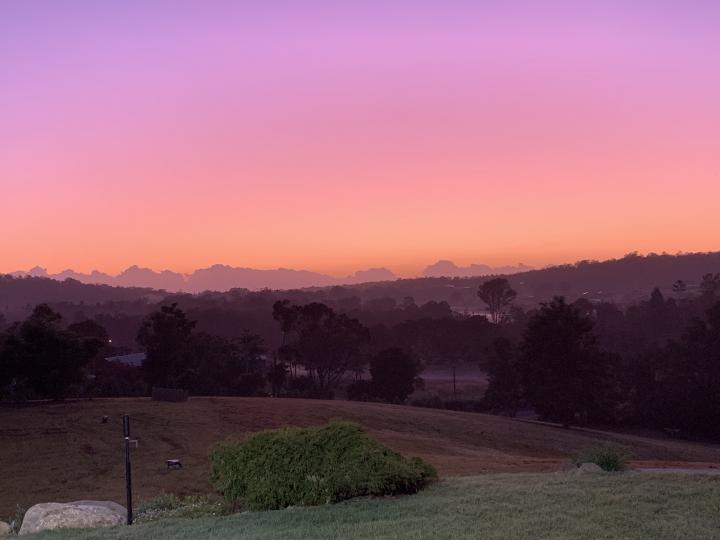
Growing up by the bush
I grew up on the Gold Coast in Australia. It’s a modern tourist town, with skyscraper buildings sprawled over miles of golden beaches, bordered by bushland and tropical rainforest. My childhood home was on the edge of town, with the native Australian bush abutting our large plot of land.
Memories of my childhood are filled with the sound of birds and the wind in the trees. At night I’d listen to the clattering of possums as they scarpered over our tin roof. The smell of jasmine outside my bedroom would be sweetly cloying in my nostrils. Our days were hot and bright with an electric blue sky, and sun so fierce that we would cower from its glare. Winters back in Australia are often warmer than some of the sunny summer days I’ve had here in Scotland.
With summer, come the bushfires. Australians are no strangers to bushfires. They are part of our culture as much as the Vegemite sandwich. I remember my father watering our house with the garden hose to protect from looming fires nearby. We once returned from holiday to find a long black scorch line on our property, where the flames had crept up towards our house before our neighbours battled them back. I recall as an adult leaving work to see fires licking up the trees, and the roads closed as a local nature reserve took flame. I arrived home to piles of ash blown onto my doorstep.
But this year was different. We hadn’t seen anything like this before.
Months of burning
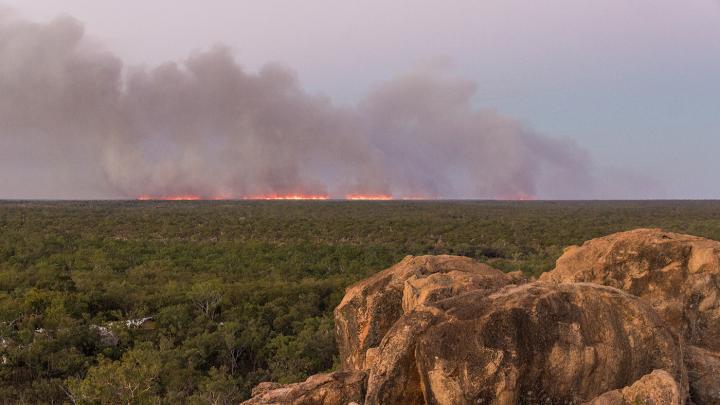
Since the start of September last year, an estimated 10 million hectares went up in flames. That is almost the size of England. In comparison, these bushfires were 80 times larger than the California fires which were called ‘the most destructive wildfire season on record’. One particular fire was the size of New York’s Manhattan.
The smoke, which was visible from space, impacted the neighbouring country of New Zealand more than 2,000 kilometres away. Even the moss-covered rainforest of the World Heritage Gondwanan Rainforest burned, in what has been described as a ‘global tragedy’. People were dying. Thousands of homes destroyed with hundreds of thousands of people forced to evacuate. Fires burned for months.
Fires merged to create ‘mega-fires’. Flames were reported to be 70 metres high. Fires so fierce they created their own weather events including lightning – which caused more fires. Fire ‘tornados’ swept up and flipped over 12-tonne fire trucks.
The most devastating issue is ecological and environmental damage. Almost a billion animals are estimated to have perished. Some species may be extinct or will become extinct very soon.
Australia has an ecosystem unique in the world. It is one which has already been under threat, with some 34 native species going extinct in the last 200 years. After the fires, our animals will struggle with food and water shortages as their habitats are destroyed. Habitats which will take decades to regenerate – if they recover at all, and are spared from future fires.
It’s utterly mind-boggling. Why did this happen?
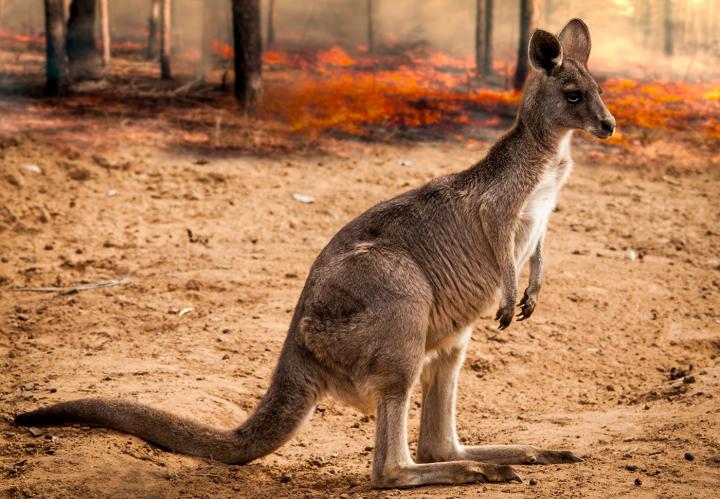
The impact of climbing temperatures
It is complicated, but conditions occurred due to a combination of long-term trends and short-term weather patterns. Australia’s temperatures are climbing to ever-higher records as the climate warms. The hot, dry and windy seasons are occurring earlier and lasting longer. Lack of winter rains over the last three years are baking our landscape dry and turning us into a tinderbox. December saw two of our hottest days ever on record.
A study found the increasing extreme temperatures that caused our bushfires last year were four times more likely because of human-caused climate change. Current climate projections have confirmed that Australia faces more dangerous fire weather conditions in the future.
A community coming together in a crisis
I cannot help but notice how our bushfires have been changing our lives and landscape over the years. Each year, our bushfires seem to become larger and more destructive. Fires are being classed as ‘catastrophic’. Along with this, our community approach to them is changing. After the terrible tragedy of the 2009 ‘Black Saturday’ bushfires, with nearly 200 lives lost, it is no longer ok for us to stay and defend our homes. More often the official message is, ‘Get out. Now. We can’t save you’.
Over Christmas, my social media feed was full of loved ones sharing photos of skies clogged with smoke. We phoned and messaged each other, “Are you ok? Do you know anyone affected?” GoFundMe pages were set up for friends who have lost homes. Schools burnt down. People posted they were either evacuating or protecting their property, and we had to wait in social media silence for them to return.
People did what they could in the face of utter helplessness. We raised funds. We offered our lands to animal shelters. My aunt spent countless hours sewing dozens of cloth pouches for the rescued orphaned baby animals. And the fires raged and burned.
Returning home to rain
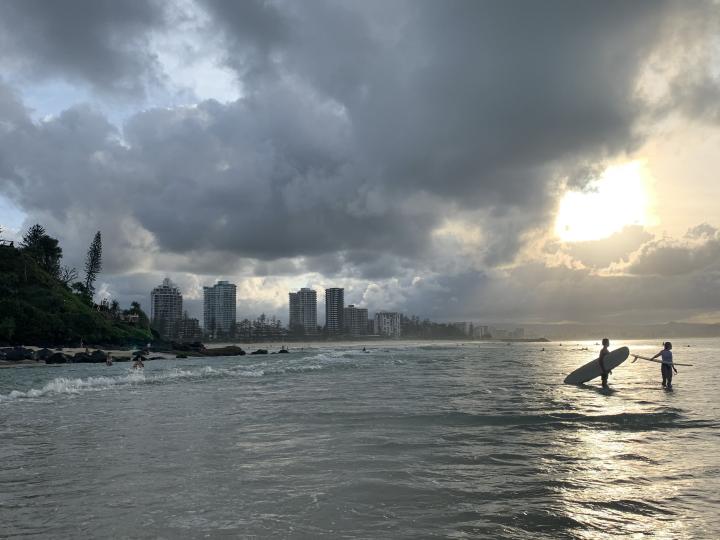
Last month, I flew back to Australia to visit family, expecting to experience this damage in its stark reality. Instead, I was hit with a deluge of storms. Our country was finally experiencing its yearly ‘cyclone’ season.
It was a welcome refuge for firefighters, who were still battling around 33 fires including a ‘mega blaze’. The amount of onslaught of this rain finally enabled the infernos to be controlled.
As I drove along the highways, loved ones pointed at emerging green grass, luscious and new. Only a few weeks prior, the landscape was a crunchy burned orange, parched and dry from the drought and heat. This rain would seem hopeful, right? Wrong.
Australia is experiencing a ‘triple whammy’ of impacts that have devastating, long-term effects on the environment and our precious native animals. Drought, fire and now floods are causing chaos to communities and the environment. While these phenomena are not new to Australia, the timing and the ferocity of these impacts are being described as ‘unprecedented’.
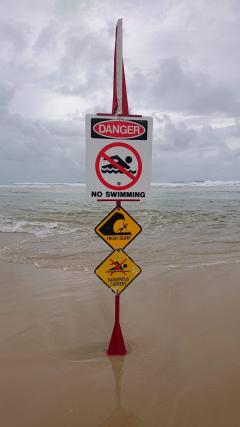
Beaches were closed as it was too dangerous to swim in the wild weather. So, I sat in my beachside pub, sweating from the heat and cowering from the huge stormy raindrops. I watched with fascination as my local community was pummelled with rain, wild weather and floods. Near my old home, floodwaters rushed through shops and gushed down the hills. My friend's homes were damaged by the sheer amount of rain that battered them, leaking through roofs and flooding rooms.
It seems one climate disaster is followed by the next, each one becoming more and more ferocious.
And there is more environmental damage. The rains didn’t cure the fires and solve our problems. Heavy rains soaking into bare and burned soil are causing severe erosion. Ash and muck from the fires are washing into rivers, choking the delicate ecosystems and killing wildlife, including our iconic platypus.
Australia is paying the price, and it continues to go up.
A time for change
So, after watching these post-apocalyptic scenes on TV, we need to start honest discussions that this may mark the beginning of Australia’s new normal. I am watching our politicians point fingers, the media in an uproar, and communities devastated. So many of my friends and family are getting caught up in debates over policy, industry, management, communities and environment.
I think the world and Australia need to make meaningful reductions in greenhouse gas emissions. Australia is the world’s biggest exporter of coal. Our country ranked last out of 57 countries for our climate policy. Back in 2008, a climate change report predicted that without action, we would face earlier and more intense fire seasons by 2020. It is also increasing the likelihood of deathly flash floods and heavy rains. There have been many warnings which we ignored. This is our wake-up call. Australia needs to change, and the world needs to change.
I hope that from this tragedy that we can try and make changes for the better. We need more than reactive measures from our government and donations from the public. Our government needs to make more inclusions for ecological scientists and earth scientists in debates and policymaking. We need to find a way to balance the health and prosperity of our human communities with the protection of our irreplaceable biodiversity in an ever-changing world.
The Australian government recently acknowledged that climate change played a role in the severity of the bushfire crisis, which is a significant moment. However, it remains to be seen if we curb Co2 emissions or give any significant attention to our environmental policies.
Towards a better world
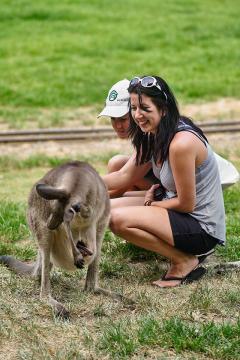
It’s not surprising to feel inadequate in the face of all this disaster. How can we make any impact in the face of such carnage?
For myself, I take hope when I see people making small changes that are resulting in significant outcomes. I hope to do the same. I’m never going to be perfect, and I can only try my best. I’ve enjoyed travelling around Europe since I moved to Edinburgh, with such exciting locations a short flight away. However, aside from visiting Australia, I now aim for my holidays to be here in the UK and via train in the future. There is such breath-taking nature and vibrant cities here in Scotland, which is right on my back door. I still love bacon and steak, but some days I try and have less meat. We can all do our bit.
My career is in communications, and I am at a fascinating time in my life. I work within the School of Geosciences at a time where the world faces some of the most critical issues in history. We are host to exciting initiatives such as the Edinburgh Centre for Carbon Innovation, and Scotland is becoming a significant world influencer in the climate change debate. There is also the 2020 United Nations Climate Change Conference, which may still take place online if not in Scotland as originally planned.
I am inspired by the academics and students who are all dedicated to making a difference as they study our fragile planet and the interactions we have with it. I get to see first-hand how complex and interwoven these situations are and how everyone can play a part. You can be a scientist monitoring and warning about change. You can be working in nature or with communities. You can be advising the government or industry, or working in education and media. We all are working together towards a common goal, in so many different areas. I take heart that my job involves seeing waves of fresh-faced students arriving to learn how they can contribute.
The time for action is now. We are not just losing populations, but entire species. Our environment may not recover before the next fire or flood. And our one billion native animals remain dead and lost to us.
Note: I would also like to take this time to acknowledge the First Nations people, who have been the sustainable custodians of this land for thousands of years. They are mourning the trauma to their country in ways that we cannot imagine. It’s time we worked more closely with these communities and embrace the knowledge, wisdom and traditions that have cared for this land to ensure Australia’s sustainable future.
Find out more
This article is an updated follow on version of a post on the University's Sustainablity Blog, where you can read many interesting stories from our staff, student and alumni community.
School of Geosciences
Read more Edit supplements
Photography by Nikki Kay and Getty/Andrey Moisseyev/Niklas Flindt/Marcio Waismann

